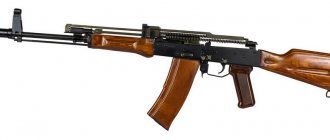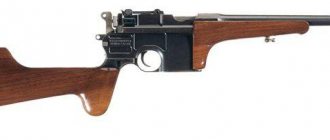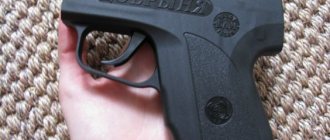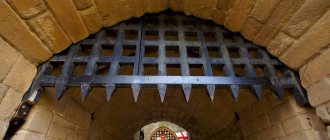Knights are valiant warriors who strictly followed a code of conduct. These representatives of the privileged class gave birth to a special type of culture, which became one of the brightest aspects of the Middle Ages environment. An active lifestyle, which involved spending most of one’s life on the battlefield and in tournaments, could not be maintained without the use of heavy knightly weapons and wearing protective armor. What did the clothes of the knights of the Middle Ages look like?
Mid-7th century – 9th century
So, you are a harsh northerner - a Norman or a German, for example. Before battle, you put on short chain mail without a hood over your shirt and a Wendel helmet - round, like a bowler hat, and equipped with a protective half-mask that covers the upper part of the face.
Vendel helmet. Berig) / wikipedia
You will defend yourself from the enemy with the help of a round flat wooden shield with a metal plate in the middle, called an umbon. Your shield has a comfortable leather strap, allowing you to carry your shield on your shoulder or neck during long hikes. But you don’t have a helmet with horns. Nobody really wore them back then.
What was worn in Europe
The Netherlands became the trendsetters in the clothing of Medieval Europe, spreading the Gothic trend to Italy, Germany and France. It was in France that innovations in clothing for fashionistas began, at the instigation of the Burgundian court. Seamstresses shortened tunics, divided them into luxurious skirts and slimming bodices, using skillful stitches to highlight the thin waist and elongate the silhouette.
European fashion delights:
- “Devil's Windows” - ladies of the Middle Ages wore a figure-slimming dress underneath, and on top they wore another one - with a neckline and sleeveless. The clergy opposed this fashion, calling for them to change into more discreet, closed clothes;
- The length of the train became more and more, it was even necessary to set its optimal length. In Italy, a stone was installed in one of the squares, near which a warrior stood with a sword to control the length of the train;
- Clothing of the Middle Ages began to abound with deep cutouts in the chest area. The neckline sank lower and lower, and fashion followers fell out of favor with the church;
- Sleeves have now become an integral part of the dress, whereas previously they were detachable or secured with ties. Their length was also significant, sometimes they were sewn like a muff;
- Tall hats - during the Middle Ages, the church considered such headwear to be a refuge of demonic forces, but it was possible to achieve an optimal hat height for aristocrats of up to 1 meter, and for ordinary townswomen - 50 cm;
- Pointed shoes were also considered “devil’s claws.” It was too uncomfortable to walk, but for the sake of beauty, the ladies were ready to endure the torment.
Holes in clothes of the Middle Ages were fastened with lacing, pins, and needles. It was not clear to an uninitiated person where the sharp fastening elements were hidden in the multi-layered dress. The gentlemen only sighed on the sidelines, complaining that the beautiful lady resembled a rose with sharp thorns.
In Medieval Europe, the production of high-quality fabrics was established. From Italy, merchants exported for sale the best brocade, velvet or silk fabrics for sewing clothes. The craftswomen of Flanders wove the finest cloth, which they decorated with purple. Flemish craftsmen gave the world famous laces that amaze with their airy structure.
X-XIII centuries
You are a European knight. When getting ready for battle, under your chain mail you wear a gambeson - a long and rather “hot” garment stuffed with tow or wool. If you are shot from a bow, there is a chance that the arrow will get stuck in the gambeson and will not harm you, and such clothing will be good at absorbing the blows of swords. You will put chain mail stockings on your feet - shossa; their soles, of course, are made of leather - otherwise you wouldn’t be able to walk.
Chainmail highways
Your chain mail reaches to your knees, its sleeves reach to your elbows, and even to your wrists. The chain mail is accompanied by a hood - a coif. Perhaps your chain mail has a permanent hood; then it should be called hauberk. So that you can walk and climb on a horse normally, the craftsmen made cuts in the chain mail at the back and front. Your helmet is Norman - ovoid or conical in shape. At the front you will attach a metal plate to the helmet - a noseplate; however, if the 12th century has already arrived, then your helmet may be solid-forged: the nosepiece is forged along with the helmet. In the same XII century, over chain mail you can wear a surcoat - a cape with or without sleeves; the crusaders adopted them from the Arabs. This cloak will protect the chain mail from dirt and overheating in the sun. Then take a shield - large, elongated, pointed at the bottom - and go to fight.
Models for modern times
Representatives of the Gothic subculture adopted the main trends of medieval outfits, although they are distinguished by pretentiousness and sophistication of forms. The clothes of Gothic women and men are permeated with the idea of hopelessness, mortal melancholy.
A combination of medieval clothing styles adapted to modern times:
- dedicated neckline area;
- lace dresses of any length and fluffiness;
- figure-hugging trousers;
- corsets on a blouse or naked body, emphasizing the curves of the owner;
- cropped jacket paired with a pencil skirt;
- an abundance of lace inserts, lacing or mesh;
- many leather items of clothing - jackets, skirts, dresses;
- black T-shirts and T-shirts with attributes in the form of bones, spiders, birds;
- voluminous raincoats with hoods;
- rough boots or shoes with an impressive platform.
Designers often experiment with clothing from the Middle Ages, adapting it to modern gothic style. Fashion houses suggest wearing sweaters reminiscent of knightly chain mail; images of basilicas, cathedrals or the faces of kings on coats and suits are also popular. A medieval style of clothing will be created by dark fabrics combined with acidic shades, an abundance of flounces and lace, and flashy makeup.
The culture of the Middle Ages is evidenced by majestic ancient cathedrals, chronicles of historians, sculptures and miniatures. The formation of a modern suit is unthinkable without a turning point in history, rejecting the prim foundations of clothing in front of European fashion. The abandonment of medieval asceticism in favor of more open outfits became a stage of rebellion, testifying to a person’s desire for comfortable and comfortable clothing.
XIII-XIV centuries
Why not protect your face from arrows and sword blows by wearing a closed sweatshirt - a helmet equipped with a visor or visor? You can also get a tophelm - the so-called pot helmet, cylindrical, barrel-shaped or in the shape of a truncated cone: it is large and heavy, but reliable.
If your plans do not include hand-to-hand combat, in which good visibility is extremely important, and you plan to fight with spears, wear a tophelm over your chain mail hood. And don’t forget to wear a felt balaclava under the hood - it absorbs shock well. Attach the helmet to the back of the chain mail with a belt or chain: then, if it comes to hand-to-hand combat (you are thrown from your horse, for example), and you take off the helmet, it will not be lost.
Topfhelm from the 13th century in a glass case at the German Historical Museum in Berlin. Ulrich Waack / wikipedia
If you are going to a tournament and want to make an impact, you can decorate your helmet with a wooden or leather heraldic figure. At least with the same horns - yes, they have already been invented; among the Germans, for example, they are in great fashion.
Try a new product - mufers, chain mail mittens woven into chain mail: your hands also need protection. However, most knights still prefer leather gloves - they say they are more convenient to hold weapons in.
By the way, about chain mail: it can be improved with the help of brigantine - metal plates sewn onto a linen or cloth base. You will get chainmail-brigantine armor. In such armor, and even in a closed helmet, with a bulky, inconvenient shield, you don’t have to bother - take a small wedge-shaped tarje.
The surcoat cloak you wear over your chain mail is large and spacious. By the way, you can transform it into a tabard - a spacious sleeveless vest with the image of your family coat of arms.
What was the ideal of beauty
According to church ideas, they judge the images of the saints of the Middle Ages. Almost weightless figures of martyrs, filled with sorrow, float under the domes of churches. The ideal of beauty was a girl repeating the face of the Virgin Mary:
- elongated face;
- neat plump lips;
- forehead too high;
- big eyes.
Artists paint on their canvases slender girls with protruding bellies, the line of the chest and hips is poorly defined. Any roundness of the body was considered vulgar and testified to the low origin of the girl. In the Middle Ages, the bodice of clothing was tightly laced, and in Spain, breast growth was restrained with lead pads. Eyes without eyelashes and shaved foreheads were in fashion, so women used folk recipes for removing body hair.
Any freckles or moles were considered devilish marks and had to be regularly rubbed with amethyst to remove them. The lady of the Middle Ages personified meekness and created the appearance of an unearthly creature. The maiden must certainly have green or blue eyes, and the ideal picture of the Middle Ages was complemented by golden hair flowing to the floor. The clothing of a medieval knight, on the contrary, emphasized masculinity. The ideal was a man with a strong physique and clearly defined facial features.
During the Middle Ages, the rose became an ideal flower. In the midst of dullness and civil strife, roses are presented to lovers, woven into wreaths, showered with petals on newlyweds, and clothes are decorated with embroidery with woven roses.
The end of the 14th - first half of the 15th century
Gambeson is no longer in trend; under the chain mail you wear an aketon, a quilted jacket with sleeves. It is not so long and thick, it is not stuffed with anything - it is simply sewn from several layers of fabric. If you have money, your aketon is equipped with chainmail inserts.
Chain mail is gradually giving way to plate armor - the most varied. You can use individual elements of armor - bibs, plastrons and placards (cover the stomach), bracers (protect the forearm), elbow pads, knee pads and greaves. Or you can, after spending a fair amount of money, buy plate cuirasses - metal shells that cover the chest and back.
On your head you put a bascinet - a metal helmet with a pointed top. Attached to it along the lower edge is a chain mail cape that protects the neck, back of the head and shoulders - aventail. The bascinet is a relatively lightweight helmet that can be worn even by infantrymen. They can be very different - with nose guards, with visors-masks, with visors in the form of a holey beak (hundsgugels). There are also grand bascinets - round helmets with plate neck protection and a perforated hemispherical visor.
Italian bascinet. David Monniaux/wikipedia
Instead of a rather long surcoat cape, they now wear a shorter zhupon or tabar: all of Europe is trying to shorten clothes. Shields are still worn small.
Medieval clothing
The clothing of the Middle Ages corresponded to church canons, which denied pomp or wealth; the entire appearance should testify to the perishability of existence. An outfit of muted shades should hide the body as much as possible, without allowing one to doubt the piety of the wearer. The formation of medieval fashion was formed not only due to the ascetic influence of religion, but also due to countless wars for territory and epidemics.
Main trends:
- Layering of clothing. Pious ladies had to wear several layers of clothing, consisting of a long undershirt and underdress, with an outer dress on top. All layers had long hemlines and tapered sleeves;
- Medieval clothing was decorated in different ways. Craftswomen disguised seams, hems, necklines or sleeves with various embroidery, tassels, lace, and fur. Lacing, buttons, and ties were used to fasten clothes in the Middle Ages;
- Fashion for costumes made from patches. Their coloring repeated the colors of the coat of arms, so one could recognize a representative of a medieval aristocratic family by their clothes;
- Simple peasants preferred gray, black and brown colors of suits; rich townspeople could combine several contrasting shades of red, green, yellow, and blue;
- In the Middle Ages, clothing was decorated with oriental motifs. During the Crusades, the Templars brought fashions for the cut, color and patterns of outfits from the east;
- Bells were used to decorate clothes, belts, hats and shoes. The medieval beauty could be heard from afar; over time, they began to decorate only the costumes of buffoons;
- Lack of underwear. It was not necessary to wear it; women in the Middle Ages made do with long shirts;
- High headdresses were complemented by capes that tightly clasped the neck and head, falling in smooth folds onto the shoulders.
During the Middle Ages, white material was considered too cheap, so it was rarely used in tailoring. A noble medieval aristocrat emphasized her beauty with a combination of the brightest fabrics for her dress and used headdresses embroidered in an oriental style.
Belts, bags, and amulets served as additions to medieval clothing. The crowned heads' belts were decorated with precious stones; knights wore belts indicating initiation into the order; the priests were content with lacing at the waist.
Second half of the 15th – beginning of the 16th centuries
Blacksmithing has reached such heights that one can wear almost entirely in plate armor. Before the battle, you put on a cuirass, to the lower part of which an iron skirt is attached, pull on plate gloves, and put an armet on your head - a helmet in the shape of a spherical dome with a double visor, protecting the face and neck both from the sides and from the front; You can fight in it both in spear and hand-to-hand combat. You had to spend a lot on armet - this helmet is affordable only for a wealthy knight. Those who are poorer wear salads - elongated helmets with backrests.
Greenwich armour, made for Sir James Scudamore. Todd Hoogerland / wikipedia
You don’t have a shield as such – what’s the point if you’re protected by armor? For battle, you take a steel buckler - a small round fist shield that you can use to parry blows and fight.
Before the battle, you order your horse to be dressed in bard - plate armor for horses.
Fashion of the Middle Ages: Gothic period
During this period, the first generally accepted fashion trends appeared, which all representatives of the European nobility had to adhere to. The Gothic era was marked by the heyday of Burgundian fashion, which dictated special rules:
- exaggeratedly long sleeves;
- uncomfortable clothing that interferes with any actions;
- shoes with long toes;
- hats of various fancy shapes.
The church at the legislative level divided costumes into women's and men's. However, no one was allowed to wear a costume of the opposite sex.
Now, in aristocratic circles, a headdress was not a mandatory attribute of a costume. But commoners had to tidy up their hair; only a small strand could be left, shaped near the forehead in the form of a curl or a ring.
It is worth noting that during the Gothic period, clothes were made taking into account the characteristics of each person’s figure. All suits hugged the figure and emphasized the advantages of the silhouette.
How much does it weigh and how much?
Full combat gear cost a lot. For example, in France of the 12th century, for chain mail alone it was necessary to pay from 5 to 16 bulls, and full equipment cost at least 30 bulls. But it was also necessary to buy weapons, maintain war horses... So not all vassals of medieval kings sought to fight on the battlefield. Many preferred to pay a special tax to the treasury - shield money - and live in peace. Using shield money, kings hired warriors on the side and purchased equipment for them.
The weight of the armor was considerable - up to 25-30 kg, so the knights inevitably had to maintain good physical shape through constant training. The most powerful even boasted that they could jump into the saddle in full regalia without the help of a servant!
The fact that a knight who fell from his horse remained on the ground during the battle, like a metal turtle, is a myth; the knight could easily rise to his feet and fight further. True, already in hand-to-hand combat. But during the tournament, in which the knights fought on spears, it really wasn’t worth falling from the horse - tournament armor was heavier than combat armor and weighed from 50 to 80 kg. It was difficult even to just get up on your feet without outside help.
Boyko Anna
Interesting story
Research work “Armor and weapons of medieval knights: myths and reality”
Content
Introduction…………………………………………………………..……………………………………………………………..……….2
1. Types of weapons of medieval knights and their purpose…………..…4
2. Types of armor of knights…………………………….…………………………..10
3. Myths about medieval weapons of knights and their refutation…….14
Armament of a medieval knight and a Russian warrior………..…….….17
Conclusion………………………………………………………………………………………………………….……20
Literature…………………………………………………………………………………………………………..………21
Introduction
The field of medieval weapons and armor is surrounded by romantic legends and widespread misconceptions. Their sources are often a lack of knowledge and experience of communicating with real things and their history.
One of the most notorious examples will be the opinion that the knight was clumsy, the armor was very heavy, so “the knights had to be mounted on horses almost with a crane,” which is absurd.
The total weight of full battle armor rarely exceeded 30 kg. The figure may seem large, but do not forget that the weight was evenly distributed throughout the body, and besides, they fought on horses.
Films about the Middle Ages are very popular and attractive nowadays. Any viewer is amazed by the size and bizarre shape of the swords sparkling brightly in the hands of the warriors. The ease with which they crush their enemies throughout the battle. Unfortunately, the real sword of that era is somewhat smaller in size, and it was by no means always the main weapon of a mounted knight. Indeed, films allow you to plunge into the life and customs of a long-gone era, but they add even more questions.
Often the heroes of computer games do not fight with real weapons, and sometimes they simultaneously find themselves in their hands with weapons from different countries and different historical periods.
Work theme
: Armor and weapons of medieval knights: myths and reality.
Target:
study the armor and weapons of medieval knights
Tasks:
- study the weapons of medieval knights, their types of purpose,
- analyze the types of armor of knights,
- consider the myths about the medieval weapons of knights and their refutation,
-compare the weapons of a medieval knight and a Russian warrior.
My interest in medieval military weapons is not accidental; for several years I studied in a medieval combat club.
Many researchers have addressed the topic of medieval weapons: Richard Burton “The Book of Swords” about the origin and centuries-old improvement of weapons, Evart Oakeshott “The Archeology of Weapons. From the Bronze Age to the Renaissance,” in which he described in detail all types of weapons and others.
Object of study: armor and weapons of medieval knights
Subject of research: types of weapons and armor of knights and their purpose
1. Types of weapons of medieval knights and their purpose.
A lot has been written about the Middle Ages, but, nevertheless, interest in this historical period has not waned to this day. One of the reasons for this is the warrior knights, who were distinguished by excellent fighting qualities.
Knight (via Polish ruсerz, from German Ritter, originally “horseman”) is a medieval noble honorary title in Europe.
Knights - professional warriors - were an organization whose members were united by a way of life, moral and ethical values, and personal ideals. The small elite of the feudal class was created by the largest landowners - bearers of high-profile titles.
Knights of lower rank served in these squads with their own detachments, appearing at the first call of the owner. At the lower levels of the knightly hierarchy were landless knights, all of whose property was contained in military training and weapons. Many of them traveled, joining the detachments of certain commanders, becoming mercenaries, and often simply engaged in robbery.
The knights of medieval Europe were the most combat-ready and technically trained military units.
In the turbulent times of the Middle Ages, when war was the most common occurrence, the “village dwellers” needed, first of all, not a priest to save their souls (as happened during the Great Migration), but a soldier capable of protecting fields and houses.
Knights were the force that everyone needed: kings against neighbors and rebellious vassals, peasants; churches - against infidels and kings. Weapons were a very important element in knightly life.
Medieval weapons are classified according to their operating principle. It is divided into cold, firearm, hand throwing. In turn, edged weapons are divided into melee and ranged weapons, and are also classified according to the nature of the impact. Impact weapons are designed to deliver crushing blows due to their impulse with a large impact area.
Piercing - for inflicting injections with the tip of a weapon, due to high pressure on a small area.
Chopping - for delivering chopping blows with the blade of the tip, due to high pressure. Let's look at some of them.
The most important weapon of a medieval knight was not a sword at all, as many believe, but a spear. A spear is a piercing weapon. Until the eleventh century, spears were mainly used as pikes and were used in battle using a sharp lunge, that is, the knight, when attacking, straightened the hand gripping the spear; therefore, the length of such weapons rarely exceeded two and a half meters. In addition, spears of this size were also used as throwing weapons. But literally two centuries later, the knight’s spear had lengthened considerably. This was due to a change in the tactics of spear combat: the lunge disappeared, only the blow remained.
Spears began to be made from three and a half meters in length, and such weapons weighed up to 18 kilograms. The shaft was usually made of ash or apple wood. Sometimes beech was used.
The sword (branc) was a knight's offensive weapon, usually wide and short, with a flat hilt. The classic knightly long sword finally took shape by the 13th century. The average length of its blade was 75-80 cm, the maximum - 90 cm. The sword was flat, five centimeters wide and had a fuller. The guard was a simple crossbar, the arms of which could be slightly bent upward. The handle, designed for one palm, was 10 cm long and ended with a pommel-counterweight, which was often used as a hiding place for storing relics. The weight of the sword was 1.25-1.8 kg. Around the 15th century, when knightly armor became much stronger, an improved sword was needed that could pierce a strong cuirass. So swords began to be made much longer than before, increasing the force of the blow.
Until the end of the 13th century, warriors fought with cutting swords, but when the knights acquired plate armor, cutting swords gave way to piercing swords, which pierced the armor between the plates.
Later a sword appeared - a two-handed sword. It was simply impossible to hold a two-handed sword with one hand. It was much longer, and therefore much heavier than an ordinary sword or a bastard, its striking power was enormous. A two-handed sword could cut a person in half with one blow. Only freeborn had the right to carry a sword, and surrender was expressed by handing over the sword to the enemy.
Popular knightly swords: claymore, weyhander, flamberge (Appendix No. 1).
“Claymore” is considered the smallest among two-handed weapons, and was especially popular among the Scots. The length of the blade is about 105-110 cm. A characteristic difference is the bend and shape of the cross: its arms were made in the form of a clover and directed downward; The Zweihander is a weapon of impressive size, sometimes reaching a total length of 2 meters. Intended for a special detachment of landsknechts who received double pay. These weapons were used to attack in the initial ranks of the troops; remarkable strength and special skills were required. The sword is characterized by a double guard and an image with boar tusks. “Flamberg” is a wavy sword with a flame-shaped blade, a kind of symbiosis of a sword and a saber. Length 1.5 meters, weight 3-4 kg. He was distinguished by his particular cruelty, because with his bends he struck deeply and left lacerated wounds for a long time. The church protested against the flamberge, but nevertheless it was actively used by German mercenaries.
They wore the sword in a sheath on the left side on a special sling fastened with a buckle. By the end of the 13th century, the sword, as well as the dagger, was sometimes equipped with thin but strong steel chains, which were attached to the knight's armor. There was less chance of losing them in battle. Each knight's sword had its own name, as if it were an animate creature. The sword of the knight Roland, the hero of the famous “Song,” was called Durandal, the sword of his faithful friend Olivier was called Altclair.
The sword can be called the real embodiment of war, a symbol of courage and valor, the constant companion of a knight and the subject of his pride. A good sword is not just a strip of forged metal, but a complex composite product consisting of several pieces of steel of different characteristics, properly processed and hardened. The sword allowed the fighter to realize his advantage not only in strength, but also in agility and speed.
Long before the establishment of the institution of chivalry, battle axes were used. Charles Martell (Hammer) took his name from martel de fer, a battle axe, his favorite weapon, which he used at the Battle of Tours (Poitiers) in 732. It was a hammer mounted on a handle with a blunt one side and a sharp tip on the other; they were used until the 14th century, considered a knightly weapon. These were also considered battle axes (axes), which varied greatly in size and shape and were used very widely.
The battle ax served both for striking and throwing. Therefore, a long belt was attached to its handle, with the help of which the ax was returned to the warrior after a throwing blow. However, over time, the battle ax and club were used less and less, until it became the tournament weapon of a medieval knight.
The club or mace, iron or made of wood with spikes, was also used by knights, but also by warriors of the lower classes. Mace (from Latin bulla - ball), a bladed impact weapon about 0.5-0.8 m long in the form of a heavy stone or metal head on a wooden handle, a type of club.
The mace appeared in the Neolithic, it was widely used in the countries of the Ancient East. The mace was greatly loved by warrior-clerics in the 11th–13th centuries. The Church forbade its servants to shed blood, and the princes of the Church had to fight. In such a situation, the mace came in handy: its impact on the soft chain mail caused such a bruise that the victim was often sent to a better world with hemorrhage or broken bones.
E. Lavisse and A. Rambaud write in their book “The Age of the Crusades” about the use of the mace by the Byzantines of the 11th–12th centuries: “The monks formed armed gangs and roamed Macedonia, the Peloponnese and the islands of the Ionian Sea. They carried out religious propaganda in their own way, supported a "holy war" against the natives, pagans or Manichaeans and preached a holy war against the Latins...
These wandering gangs became a real “Egyptian execution” for the regions. These people in black clothes, armed with bows and iron clubs, sitting on Arabian horses, with falcons in hand and fierce dogs in front, hunted people and rushed across the country like “real demons.” They killed anyone who was suspected of adherence to paganism or heresy, especially those whose lands were adjacent to their possessions...
The bow, which was common in ancient times as an offensive weapon, was replaced by a crossbow, the penetrating power of which was truly terrifying. An arrow fired from a crossbow pierced both chain mail and plate armor from a distance of 150 meters. The crossbow was known in ancient China, but was then reinvented in Europe around 900.
It had a good range and was more powerful than most bows, but took much longer to reload (Appendix #1)
On average, most crossbowmen fired two shots per minute. The crossbow was a deadly weapon and was very popular for the simple reason that it took little time to learn how to shoot. He pierced not only chain mail, but also plate armor from a distance of 150 meters.
It is not surprising that the Latran Church Council of 1139 banned the use of crossbows in wars between Christians, although the church ban did not apply to wars with Muslims. Richard I of England, the Lionheart, was wounded twice by crossbow arrows. The crossbow was considered a criminal weapon, since the wound after it was severe, often fatal. Despite the prohibition of the Church, Genoese crossbowmen were highly valued in medieval Western Europe. For example, many of them were in the military service of the French kings, where they received very good salaries. Moreover, in the 13th century, not only the monarchs of England, France or the German sovereigns, but also the pope himself did not refuse the services of mounted crossbowmen.
Knights, in general, considered the bow and crossbow not to be knightly weapons, although sometimes they could resort to their help in foot combat. For example, Richard the Lionheart, like Godfried of Bouillon, was a masterful crossbow shooter. In fact, the participants in the first Crusade, according to the testimony of the Byzantine princess Anna Komnenos, were already armed with crossbows. In fact, she was the first at that time to make a detailed description of them. Europeans used this type of weapon until the beginning of the 16th century.
Knights also used a dagger in hand-to-hand combat. Worn on the right hip, it was used for the final blow, when the knight threw the opponent to the ground and defeated him.
All weapons were kept with special care, the hilts were often decorated with precious stones, and the blades with inscriptions and drawings.
Thus, for five long centuries, Europe was an arena of fierce wars, battles and battles. One kingdom replaced another; there was no need to talk about permanent borders of states. Not a single ruler of Europe could boast of the stability of his possessions.
Being a warrior, being able to wield a weapon and know combat techniques became the most important element in the formation of a culture of human relations. Cruelty took the form of a person's personal courage, disregard for danger. Weapons were elevated to the rank of a cult, which was worshiped and which determined the status of its owner. War became a craft, and weapons became an invariable element of a knight's costume.
2. Types of armor of knights.
A knight's body is protected by armor. Until the end of the 9th century, this was armor, a tunic made of leather or fabric, covered with metal plaques or rings; later, armor is replaced everywhere by chain mail.
In the 10th century, chain mail reached the hips; in the next century, it lengthened even further, reaching the knees. The Norman knights of William the Conqueror during the invasion of England were armed in this way, as evidenced by the images on the Bayeux Tapestry. In the 12th century, the rings were intertwined, so the chain mail became stronger, almost double. The chain mail was very flexible and could be worn freely on the body. The same material is used to cover the arms and legs.
By the middle of the 12th century, knighthood was completely dressed in chain mail. Engravings of that time show that steel chain mail literally covered the warrior from head to toe: they were used to make leg guards, gloves, and hoods.
This flexible steel garment was worn over a leather or quilted undershirt to protect against bruises, and they could be very sensitive, even if a sword or battle ax did not cut through the steel rings. On top of the chain mail they wore a linen tunic, which protected the armor from damage, as well as from heating by the sun's rays.
At first, the tunic looked very modest - it was intended for battle, after all - but over time it became a luxurious, dandy attire. It was sewn from expensive fabric and decorated with embroidery - usually with images of the family knight's coat of arms.
The chain mail weapons were incomparably lighter than before. Contemporaries claimed that it was as easy and comfortable to move in it as in ordinary clothes. The knight received greater freedom of action in battle and was able to inflict quick and unexpected blows on the enemy.
In such conditions, a large shield covering almost the entire body was, rather, a hindrance: the chain mail weave already sufficiently protected the knight’s body.
A shield is an ancient military armor that warriors used to protect themselves from bladed and thrown weapons. Most shields were usually made of wood, rods and leather, bound with bronze and iron. The shape of the shields could be round, oval, rectangular, triangular, and often with a curved plane. Over time, it gradually decreased and began to serve only as additional protection against blows from a spear or sword. The coat of arms was depicted on the outside, and straps were fastened on the inside so that the shield could be held comfortably and firmly on the left hand. For rectangular or elongated shields, the arrangement of such handle-belts was transverse. In six- or octagonal, as well as round shields, the belts were positioned so that when worn, the base of the coat of arms was always at the bottom. The widest belt fell on the forearm, and the shortest and narrowest was clamped with the hand.
The helmet in the early Middle Ages was conical, in the late Middle Ages it was tub-shaped. Its lower edges rested on the knight's shoulders. The face was completely covered, leaving only narrow slits for the eyes. Decorations on helmets also appeared, made of wood, bone, metal - in the form of horns, huge claws, wings, iron knight's gloves...
However, even this seemingly quite advanced, reliable and convenient weapon had its drawbacks.
The tub-shaped helmet provided too little air for breathing. At the height of the fight, I even had to take it off so as not to suffocate. It was not easy to navigate through the narrow eye sockets; It happened that the knight could not immediately distinguish enemy from friend. In addition, the helmet was not fastened with other armor in any way, and with a deft blow it could be turned so that the blind side appeared in front of the eyes instead of slits. In this case, the knight was at the complete mercy of the enemy.
Over time, offensive weapons have changed. Gunsmiths had to look for protection specifically from a piercing blow. As often happens, I again had to remember something that seemed to have already been abandoned - scale armor.
The basis for additional protective weapons was an elegant tunic, which was worn over chain mail. But they began to sew it from very durable material, or even leather. It was covered with silk or velvet on top, and lined with metal scales underneath. Each of the scales was attached to a separate pin, and the ends of the pins were passed out and were gilded, or even decorated with precious stones.
Such weapons, which complemented the chain mail shirt, turned out to be very reliable, but also, of course, expensive. Not every knight could afford it.
Over time, additional metal strips began to be strengthened directly on the chain mail. The chain mail thighs were also strengthened. Particular attention was paid to protecting those parts of the armor that were most open to attack in battle. This is how another type of additional weapons appeared - shoulder pads, bracers, knee pads with leggings.
Sometimes small movable parts were attached to the bracers from narrow transverse strips connected to each other according to the principle of the same scales, covering the shoulder and elbow. The leggings were also lengthened to protect the instep of the leg. Leather knight's gloves were made with wide bells and reinforced on the outside with solid metal scales.
By the beginning of the 15th century, there was already so much metal on the basis of chain mail that it made sense to abandon chain mail altogether. The individual metal parts were fastened together with strips of hard, pressed leather boiled in oil.
Under such a shell the knight wore a thick quilted jacket made of leather or some dense material. A smart tunic was still worn on top, but now it consisted of two parts - upper and lower.
If you turn to Walter Scott’s novel “Ivanhoe,” you can read how one of the heroes, the knight Briand de Boisguillebert, who fought in Palestine for a long time and took his armor from there, was armed:
“Under the cloak one could see a coat of chain mail with sleeves and gloves made of small metal rings; it was made extremely skillfully and fit as tightly and elastically to the body as our sweatshirts, knitted from soft wool. As far as the folds of the cloak could be seen, his hips were protected by the same chain mail; the knees were covered with thin steel plates, and the calves with metal chain mail stockings.”
Shields of the 11th and 12th centuries were of considerable length. Concern for the strength of the shield led to it being made convex and equipped with iron plates.
The knight's helmet took on an almost spherical shape and was equipped with a high crest. A visor was attached to it on hinges, which could move up and down along the ridge. The chin was connected to the helmet with loops and covered the lower face and neck.
The cuirass consisted of a breastplate and a backrest, connected with clasps. The breastplate was shaped in such a way that it seemed to deflect a direct blow from a spear or sword, softening it. Abdominal plates were attached to the front, covering the upper abdomen. Legguards were their continuation, and a lumbar cover was attached to the backrest. The mantles were attached to the necklace using straps or using special pins. The right mantle was always smaller than the left, to make it more convenient to hold a spear under the right armpit.
The hands were protected with metal gloves. Sometimes they were even made with separated fingers.
The legs up to the knees were covered with so-called half-tube covers (Appendix No. 2).
XVI-XVII centuries became the time of decline of armor. They tried to adapt them to the development of firearms, they tested them by shooting them, they experimented by adding additional plates. From the end of the 16th century. only very conservative warriors wore full plate armor. From now on, warriors protected only the head and part of the body, which has survived to this day in the form of helmets and body armor.
Knights always fought in armor. At first it was chain mail made from woven steel rings, then chain mail was replaced by plate armor. By the beginning of the 15th century, there was a lot of metal on the chain mail base. Changes affected all types of knight armor, offensive weapons changed, and means of defense also changed.
3. Myths about medieval weapons of knights and their refutation.
The field of weapons and armor is surrounded by romantic legends, monstrous myths and widespread misconceptions. Their sources are often a lack of knowledge and experience of communicating with real things and their history. Most of these ideas are absurd and based on nothing.
Perhaps one of the most notorious examples is the belief that “knights had to be mounted by crane,” which is as absurd as it is a common belief, even among historians. In other cases, certain technical details that defy obvious description have become the object of passionate and fantastically inventive attempts to explain their purpose... the misconception is that the knight's armor is extremely heavy and severely limits the mobility of its wearer.
A full set of combat armor usually weighs from 20 to 25 kg, and a helmet - from 2 to 4 kg. This is less than a firefighter's full oxygen outfit, or what modern soldiers have had to carry into battle since the nineteenth century. Moreover, while modern equipment usually hangs from the shoulders or waist, the weight of well-fitted armor is distributed over the entire body. It was not until the 17th century that the weight of combat armor was greatly increased to make it bulletproof due to the improved accuracy of firearms. At the same time, full armor became increasingly rare, and only important parts of the body: the head, torso and arms were protected by metal plates.
The opinion that wearing armor (which took shape by 1420-30) greatly reduced the mobility of a warrior is not true. The armor equipment was made from separate elements for each limb. Each element consisted of metal plates and plates connected by movable rivets and leather straps, which allowed any movement without restrictions imposed by the rigidity of the material.
The widespread idea that a man in armor could barely move, and having fallen to the ground, could not get up, has no basis. On the contrary, historical sources tell of the famous French knight Jean II le Mengre, nicknamed Boucicault (1366–1421), who, dressed in full armor, could, by grabbing the steps of a ladder from below, on the reverse side, climb it using only hands Moreover, there are several illustrations from the Middle Ages and the Renaissance in which soldiers, squires or knights, in full armor, mount horses without assistance or any equipment, without ladders or cranes.
Modern experiments with real armor of the 15th and 16th centuries and with their exact copies have shown that even an untrained person in properly selected armor can climb on and off a horse, sit or lie, and then get up from the ground, run and move his limbs freely and without discomfort.
That armor was worn only by knights is also a misconception, but a common belief that probably stems from the romantic idea of the “knight in shining armor,” a picture that itself gives rise to further misconceptions. First, knights rarely fought alone, and armies in the Middle Ages and Renaissance did not consist entirely of mounted knights. Although the knights were the dominant force in most of these armies, they were invariably - and increasingly over time - supported (and countered) by foot soldiers such as archers, pikemen, crossbowmen and firearms soldiers. On campaign, the knight depended on a group of servants, squires and soldiers to provide armed support and look after his horses, armor and other equipment, not to mention the peasants and artisans who made a feudal society with a warrior class possible.
The next misconception is that women in the old days never wore armor or fought in battles. In most historical periods, there is evidence of women taking part in armed conflicts. There is evidence of noble ladies turning into military commanders, such as Joan of Penthièvre (1319–1384). There are rare references to women from lower society who stood “under the gun.” There are records of women fighting in armor, but no contemporary illustrations of this topic survive. Joan of Arc (1412–1431) will perhaps be the most famous example of a female warrior, and there is evidence that she wore armor commissioned for her by King Charles VII of France. But only one small illustration of her, made during her lifetime, has reached us, in which she is depicted with a sword and banner, but without armor.
Over the course of many centuries, many legends have formed around the sword, some of which we will try to refute:
The ancient sword weighed 10-15 kg and was used in battle as a club, leaving opponents shell-shocked. This assertion has no basis. Weight ranged from approximately 600 grams to 1.4 kg.
Poor quality steel was used for European swords. Historians have established that since ancient times, Europeans have successfully used various metal alloys.
Fencing was not developed in Europe. A variety of sources claim the opposite: for many centuries, Europeans have been working on fighting tactics, in addition, most techniques are focused on the dexterity and speed of the fencer, and not on brute strength (Appendix No. 2).
Despite the various versions of the origin and development of the sword in history, one fact remains unchanged - its rich cultural heritage and importance.
There are quite a lot of misconceptions about the medieval weapons of knights. It is very difficult to find sufficient evidence for one myth or another. The distant Middle Ages still hold many mysteries.
4. Armament of a medieval knight and a Russian warrior.
Studying the history of Russia in the Middle Ages, we do not come across the word “knight”, more often “combatant”. In the “Book of the Limits of the World,” written by an unnamed eastern author based on materials from the 8th century, in the chapter “Discourse on the Country of Rus” it is said: “One part of them is chivalry...” And further: “Very valuable blades and damask swords are made there. All Russians are armed with such swords, their knights always wear armor.
What kind of weapons did Russian soldiers of this period have? Were they similar to the knights of Europe?
Initially, warriors in Rus' and Western Europe dressed approximately the same. Since in Rus' weapons were mostly imported. Both of them used chain mail and scaly armor. The sword was also a symbol of military dignity (Appendix No. 3)
For a long time, Europeans fought only with each other, and Rus' faced nomads: the Polovtsians, the Tatar-Mongols. The warriors had to be fast, so they simply had no need for steel armor.
In the 12th - first half of the 13th centuries, a helmet with a half-mask, a massive long saber, a heavy sword with a long crosshair appeared, but all this was lighter than the European one.
We compared the weapons of a German knight and a Novgorod warrior (Appendix No. 3). The knight's sword is 110-115 cm long, the Russian warrior's sword is 80-90 cm. Chain mail in Rus' was shorter, therefore lighter. The Russians used battle axes, spears, and bows. The Germans used a falchion, extended to the end of a cleaver.
The Russians had a very effective weapon that hit the enemy, although in Europe they used it quite rarely. Bows were made of wood and horn. The total length of the bow reached two or more meters.
The chronicles describe the amazing speed with which the archers fired their arrows. There was even such a saying: “A tight bow is a hearty friend.” Wielding a bow required special virtuosity. Bows were quick-firing, which allowed them to be used in field battles and against lightly armed steppe inhabitants. The bow has been a warrior's faithful companion for many centuries. For many centuries, Rus' fought against nomads, and from here it was impossible to do without a bow. And even firearms could not displace it for a long time. It is known, for example, that bows were used even during the Napoleonic wars.
Thus, we see that the knightly weapons of both European knights and Russian warriors are quite complex.
The main difference in protective equipment relates to the protection of the limbs. The specificity of the knight's complex of protective equipment is that his body is completely covered with chain mail, including the feet and hands. Unlike a knight, a Russian warrior has much weaker protection for his limbs, and his body protection is often more serious (lamellar armor). The main difference in weapons is the widespread use in Rus' of more effective compound bows, in contrast to Western Europe, where simple bows predominated. The presence of such bows, in turn, led to better training of archers, including the development of such types of troops as horse archers.
Much less is known about the equipment of Russian soldiers, since there are very few images and archaeological finds.
Over time, it changed and improved, solving the main tasks of securing and protecting the warrior.
Conclusion
For five long centuries, Europe was an arena of fierce wars, battles and battles. One kingdom replaced another; there was no need to talk about permanent borders of states. Not a single ruler of Europe could boast of the stability of his possessions. Being a warrior, being able to wield a weapon and know combat techniques became the most important element in the formation of a culture of human relations.
Dressed and armed in this way, the medieval knight was almost invulnerable, and over time, the weapons became more and more improved, making the warrior look like a living fortress.
There are a lot of myths and speculations about the armor and weapons of medieval knights. It is very difficult to find sufficient evidence of one myth or another. The distant Middle Ages still hold many mysteries.
Initially, warriors in Rus' and Western Europe dressed approximately the same. Since in Rus' weapons were mostly imported. Both of them used chain mail and scaly armor. For a long time, Europeans fought only with each other, and Rus' faced nomads: the Polovtsians, the Tatar-Mongols. They simply had no use for steel, heavy armor; they interfered and hampered movement during the battle.
Thus, we see that knightly weapons are quite complex. Weapons and armor changed and improved, solving the main tasks of securing and protecting the warrior.
Bibliography
1. Koeningsberger G. Medieval Europe. 400–1500 years. – M.: “The Whole World”, 2001.
2. Ivanov K.A. "The Many Faces of the Middle Ages." – M.: “Alteya”, 2007.
3. Nosov K.S. "Knight tournaments". – St. Petersburg: “Polygon”, 2002.
4. Rua J.J. "The History of Chivalry". – M.: “Aletheya”, 2011.
5. Soldatenko A. “Knightly Encyclopedia”. – M.: ABC “MEDINVEST”. 1994
6. https://mport.bigmir.net/war/1519397-TOP-5-luchshih-voinov-Srednevekov-ja
7.
Shpakovsky V.O. “Knights”, Publisher: Timoshka (Baltic Book Company)
2010
Appendix No. 1
daggers
crossbow
Appendix No. 2
Appendix No. 3
The difference between the weapons and armor of a German knight and a Russian warrior
Types of dresses of the Gothic period
The Gothic period brought into being two types of dress: a kirtle dress, the bodice of which was decorated with long lacing, and the sleeves were fastened separately, and a rob dress, which had a neckline, a full skirt, a belt under the bust and a train.
At this time, the first corset consisting of metal rods was born. However, its role was limited to giving the figure a look as if the woman was pregnant, since this time was marked by the cult of pregnancy. Some women even put small pillows under their dresses to make their bellies appear rounder.
The sleeves of dresses were attached to the outfit separately; they could have a narrowed shape and hide the thumb on the hand, or they could be very wide, draped with brocade and decorated with embroidery.
Over the dress, as in the early Middle Ages, women wore a surcoat or upeland, which appeared during this period. The latter was intended for celebrations and had a fur trim.
Women's gothic costume
The waist of a woman's suit in this era still remained high, but an impressive neckline appeared. A completely open neckline was not allowed; it was draped with expensive fabric, in most cases transparent.
At this time, the most popular material for women's dresses was brocade, which was decorated with threads of gold or silver, various embroideries, pearls and precious stones.
Now women's dresses hugged the figure, starting from the shoulders and ending just below the waist, giving the woman grace. The sleeves of the upper tunic were shaped like a bell, while the lower ones fell almost to the ground.
The attire was valued for its rich decoration with precious stones and furs, as well as the use of gold jewelry (bells, bells). Aristocrats could have a train, but its length was clearly defined: the greater the status a woman had in society, the longer the train of her dress was.











